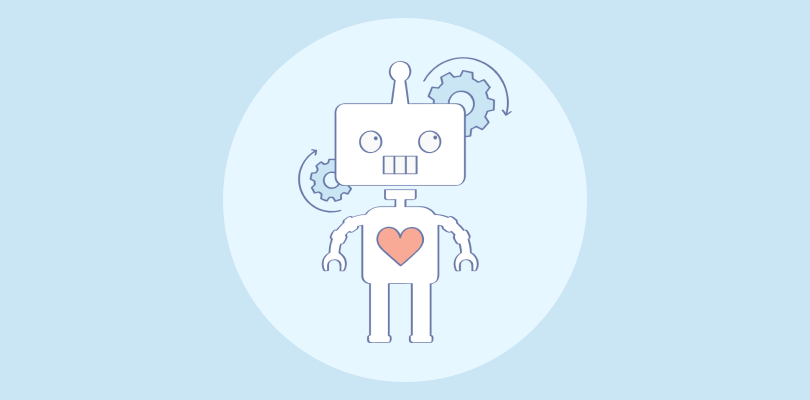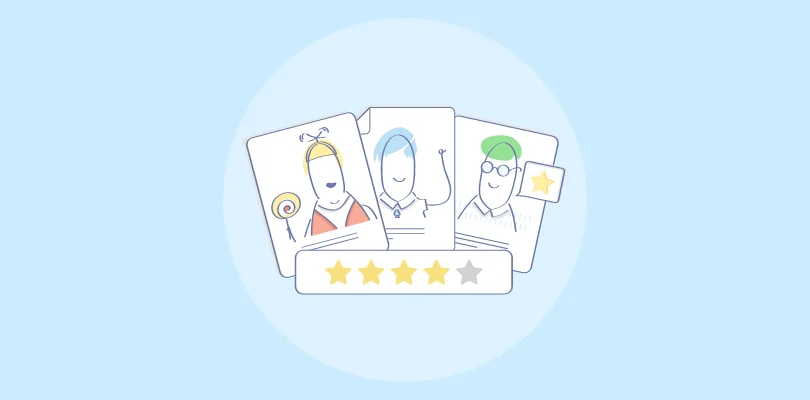There is this thing about contemporary customers- they have changed. A lot!
They no longer want to settle for generic products or experiences and rather want everything to resonate with their personal tastes. But with your customer base growing into leaps and bounds, how do you craft a unique, personalized customer experience for everyone, every single time?
Personalization is pointless without knowing the individual. Understand the dreams, hopes, and fears that motivate your customers, then hit them where it counts. – Paul Gillin
Whether it is about gaining relevant context using customer support software or simply sharing personalized emails, we have got you covered through this blog.
In this blog, we will explore the personalized customer experience definition, see brands that have nailed personalization, and explore 10 personalization tips to transform your customer experience. Let’s get started!
What Is Personalized Customer Experience?
Personalized customer experience refers to developing products, services, and interactions to meet your customer’s unique and individual requirements. Right from greeting your customers by their first name to designing offers that meet their likes and interests, personalization has become the new brand differentiator.
In today’s era of the ‘empowered customer’, personalization has become so important that businesses cannot afford to ignore it anymore. According to an Accenture report, 33% of customers who ended their relationship with a business did so because of a lack of personalization.
Well, this was just the tip of the iceberg. Let us discuss the further role of personalization in customer experience.
Why Do You Need to Offer Personalized Customer Experience?
Remember the time you went to your favorite restaurant, and their employee greeted you by your name and remembered your previous orders? Didn’t it feel good to be recognized and valued by your go-to-restaurant?
Yes! A small touch of personalization can have magical consequences for everyone- your employees, customers, and the business.
- Personalization builds trust
When you share a personalized message with your customers, they are impressed. This small gesture reveals that your business is ready to understand their needs and give them the attention they deserve.
- Personalization enhances customer engagement
Ask yourself a small question- would you like to engage with an employee that treats you like a total stranger or someone who makes you feel at home? Yes, we all would naturally like to engage more with a brand that personalizes every customer interaction.
How to Create a Customer Personalization Strategy
To make any goal a reality, you need a solid plan in place. Here are 3 ways to create and execute a customer experience personalization strategy:
1. Understand Customer Expectations
You cannot offer stellar customer experiences unless you attempt to understand your customer’s expectations. This is an important initial step of customer personalization strategy and will help you take a deep dive into their minds. Here are some ways to get started.
- Conduct regular opinion polls and customer surveys
- Track what customers are posting online about your business or close competitors
- Analyze online customer reviews
2. Segment Your Customer Base
Personalization and segmentation are often used interchangeably, however, both processes complement each other. In order to personalize experiences, it is important to segment your customer base into different groups. This will only make your job easier.
- Online VS Offline Shoppers: Segregate customers who love online shopping from those who prefer to shop from offline stores.
- Gender: Men and women indulge in buying products that cater to their gender.
- Age (Kids, Youth, Adults, Elderly): People of different age groups tend to show different buying habits.
3. Implement Your Strategy Across Multiple Channels
Once you have understood what customers expect from your brand when they interact with you and segmented them into different groups, you must look to craft memorable experiences. For instance, if your target group ‘Women’ loves to buy accessories along with apparel, recommending the same on your online website can lead to an increase in the average cart value.
Don’t limit this strategy to a single channel. Make sure that no matter if customers contact you via email, chat, phone, or any other medium, they must get a seamless experience.
Examples Of Personalized Customer Experience
Over the last couple of decades, we have witnessed brands that have redefined customer experience. They have carved a unique name for themselves in the market and have set the bar high. Let’s explore some popular examples of brands that have mastered personalization.
- Stitch Fix Delivers ‘Tailor-Made’ Customer Experiences
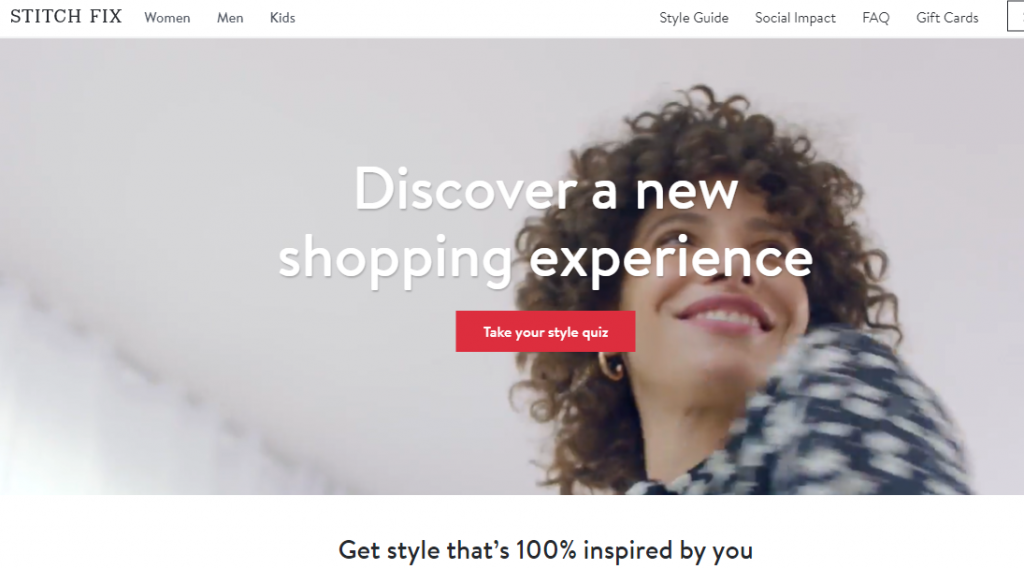
Stitch Fix is not your regular online fashion brand- it’s so much more. It’s an online personal styling brand based in the United States that uses complex algorithms and data science to personalize clothing items for customers- men, women, and kids.
In addition to providing measurements, customers are asked to complete a mandatory style quiz. A Stitch Fix stylist then sources and ships 5 clothing items to match the personal style of the individual. Customers can keep or return items that are sent and this further improves the recommendations over time.
- Amazon Recommends the Products You Really Need
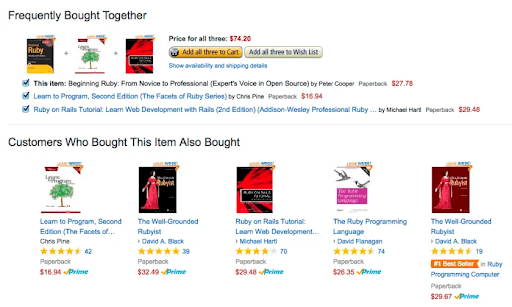
When it comes to personalized recommendations, Amazon, the global e-commerce giant, has set the gold standard for all businesses. While shopping online, we all have come across websites that will recommend products that make no sense.
However, Amazon makes recommendations that are so relevant that customers often wonder if somebody is reading their minds. Amazon makes use of AI to display personalized homepages to millions of customers around the world. Besides this, Amazon’s algorithm takes a customer’s buying habits, purchase history, and several other factors into account to recommend products that a person really needs.
- Nike Brings Out the Designer in You
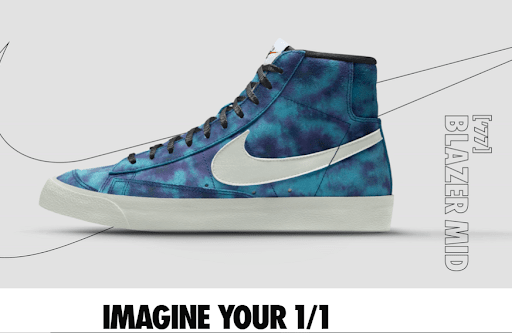
Nike has received global attention for its popular ‘Nike By You’ customization campaign that allows customers to personalize their Nike sneakers. Customers can unleash their creativity, use different materials, colors, etc., and watch their design in action.
Now, many people would wonder why a billion-dollar brand like Nike needs to customize products when it can easily sell specific designs. The answer to that is pretty simple- by allowing customers to design their shoes, Nike is empowering them to express their individuality.
FREE. All Features. FOREVER!
Try our Forever FREE account with all premium features!
10 Personalization Tips for a Better Customer Experience
So far, we have learned that personalization works. It is one of the top reasons behind the success of brands like Amazon and Nike. To help you level up, we have assembled a list of 10 expert tips for delivering personalized customer experiences:
#1. Map Out the Customer Journey
A customer journey map refers to the representation of all the stages an individual goes through with your business- right from being a prospect or MQL to a loyal brand advocate.
But why should you map out your customer journey?
With the help of a customer journey map, you can identify customer needs, their expectations, and what makes them move further ahead in their journey with your brand. By understanding this, you can structure key customer touchpoints to craft the most effective and personalized experience for your customers.
For instance, if a customer is at the ‘Interested’ stage, you can share content that highlights your product features. On the other hand, for ‘Paying Customers’, you can share content that helps them use your product or service better.
#2. Capture Data, Data, & More Data
For modern consumers, data privacy has become an important aspect of their relationship with a brand. However, it is also important to note that most customers don’t mind sharing their data as long as they know how and when it is going to be used.
A massive 83% of customers are willing to share their data to enable a personalized experience as long as brands are transparent about how they are going to use the data.
A personalized user experience is only made possible when you have the relevant data that tells you everything you need to know about a customer, their expectations, buying behavior, interests, and a lot more. For a start, consider knowing the answers to these questions:
- What makes them choose us over our competitors?
- On which web pages are they spending most of their time?
- What customer service channels do they prefer to contact us?
- Which mediums should we use to keep customers well-updated and notified?
- What are our email click-through rates?
Read More: Customer Service Analytics: Use Cases, Metrics, and Tools
#3. Offer Personalized Customer Service
Customer service is one area, where even the smallest of businesses can shine and carve a name for themselves.
When customers reach out to your business for assistance and receive personalized service, they take note. It conveys the right message that whenever they need help- your business is ready to resolve their issue on priority.
How to offer personalized customer service?
- Greet customers by their first name: Yes! You might have heard this tip from thousands of others but it actually works. If a customer walks into your store, greet them with a smile, and pay attention to what they have to say. Nothing beats the idea of giving your undivided attention to a customer.
- Provide multiple customer service channels: Customers prefer different channels to contact a business but this does not mean you invest in every communication channel. Simply identify the channels preferred by the majority of your customers and stay available for them.
- Share personalized self-help content: You can create a dedicated self-service knowledge base and share links to self-help articles and FAQs based on a customer’s needs and problems.
- Leverage a help desk software: The best help desk software will help you record all customer interactions emerging on various channels. This means that when a customer comes running with an issue, your agents have all the context they need to
Loyalty programs are an effective way to reward your customers for sticking to your brand even after the presence of multiple brands in the market.
When we talk about loyalty programs, the first thing that comes to mind is the generic 15 % or 20% discount messages that we get for being a loyal customer. But is that enough?
Obviously not! Customers want to be rewarded for their loyalty with something that is meaningful- something that is tailor-made for them.
How to personalize your loyalty program?
- Generate original loyalty program ideas keeping your business, industry, and target audience in mind
- Directly ask your customers what they would like to get in return for taking part in your loyalty program
- Offer customers multiple ways to earn, share, and spend reward points
- Create personalized dashboards for customers where they can track their progress
#5. Run Killer Marketing Campaigns
In the history of capitalism, businesses that have dared to stand out from the crowd have always witnessed a huge rise in customer attention as well as profits.
For instance, who could forget the famous ‘Share a Coke’ campaign that took customer personalization to a whole different level? In 2014, Coca-Cola company replaced its iconic brand name with popular names of Americans on Coke bottles.
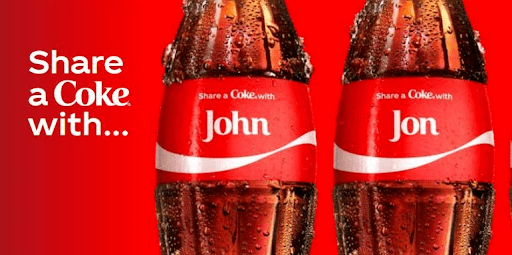
But why was this campaign so successful?
Customers could buy a product and share it with their close ones- creating an emotional bond with the brand. Moreover, over 500,000 pictures of such Coke bottles were shared on social media leading to successful marketing at almost zero cost.
A personalized marketing campaign is a great way to woo existing customers and get the valuable attention of potential customers. When people who have never bought from you witness your efforts to make customers feel special, they are automatically attracted to your brand.
#6. Keep Emails Interesting & Personalized

Do your emails always land up in the spam folder? Do customers never take any action even after receiving them? Well, if the answer has been a ‘yes’ in any of the above scenarios, a lack of user experience personalization can be the reason.
According to a study by Experian, personalized emails have 29% higher open rates and a whopping 41% higher click-through rates.
Offer personalized content in the form of newsletters, links to self-help articles, training videos, and more. Always remember that more emails do not mean more results. Sit with your marketing geniuses and figure out a schedule to share personalized emails on a periodic basis.
Now, running heavy email-marketing campaigns means that you will get the attention of your customers in some way or the other. In that case, you can use email management software to keep a track of all email conversations and share faster replies using canned responses.
#7. Keep Recommendations Relevant
Modern customers can smell it when a business recommends its products or services just to meet its sales targets. Irrelevant suggestions can not only hamper a customer’s experience but also make them lose faith in your brand.
In a study conducted by SmarterHQ, 70% of millennials said they are frustrated with brands sending irrelevant emails.
Many businesses make the mistake of recommending products to customers that they believe are “hot-selling” or those that provide the highest return. Generic or repetitive recommendations will only make the customer frustrated and will have the lowest click-through rates.
Just like Amazon, you must also personalize every customer’s homepage so that whenever they log in to their account, they can see products that actually match their interests and likes. The same goes for emails, keep the recommendations short, and highly personalized.
#8. Get Behind the “Search”
An effective search means that a customer can precisely find what he/she has been looking for in the least amount of steps. No matter if a customer makes a search on your help center page, website, or mobile application, the search results must be personalized.
You can make the most of a customer’s search history for enhanced personalization. You can not only improve the future search results but also recommend the customer products or services based on previous searches. For instance, if a customer has repeatedly searched for a white denim of a particular size, you can recommend the same through the ‘Products You May Like’ section.
Every search result on your website or app must be accompanied by accurate product descriptions, product specifications, high-definition images, genuine reviews, and other relevant content.
#9. Make Use of AI for Real-Time Personalization
We all have often heard how technology lacks a human touch and probably can never match the personalization capabilities of a human being. Well, you can throw that idea like yesterday’s newspaper as AI is here to do the unthinkable.
For example, Under Armour is more than a sportswear brand- it wants all its customers to be active and fit. For this very reason, its app makes use of Artificial Intelligence (AI) to collect vital personal information on an individual’s overall health, physical activity, diet, etc. to make personalized recommendations for workouts and an overall healthy lifestyle.
Another great example would be the extensive use of AI to develop intelligent chatbots. Unlike previous ones, these chatbots are using real-time customer data which allows them to add a personal touch to every chat interaction.
#10. Don’t Be Afraid to Ask Customers
In addition to making profits, one of the major focus points of successful businesses is to serve customers better. Remember, whatever position you have achieved in the market, it’s only because of your loyal customer base.
To delight customers, identify gaps, and directly ask them about how you can improve the customer satisfaction or experience. The customers can offer you their valuable viewpoints and highlight areas specific to your website, app, or campaigns that need further improvement.
In order to capture the best inputs in the least amount of time, share periodic surveys throughout the customer journey. For instance, you can directly ask your customers about the channels (social media, email, customer portal, etc.) your business can use to recommend products they really need.
Break Through the Noise With Customer Experience Personalization
In today’s volatile business world, where customers switch brands as quickly as they switch channels on TV, customer experience has become the new brand differentiator. Brands must use personalization to break through the noise and foster meaningful customer relationships.
If customer experience is the new battlefield, personalization is the only ammunition you need.
Capture customer data at key touchpoints, offer personalized customer service with SaaS help desk software, share relevant product recommendations, and always consider customer feedback to improve your business. Remember, a slight personal touch can have magical consequences.
 Tips
Tips
We’d love to hear your tips & suggestions on this article!
FREE. All Features. FOREVER!
Try our Forever FREE account with all premium features!

 We'd love your feedback!
We'd love your feedback! Thanks for your feedback!
Thanks for your feedback!



